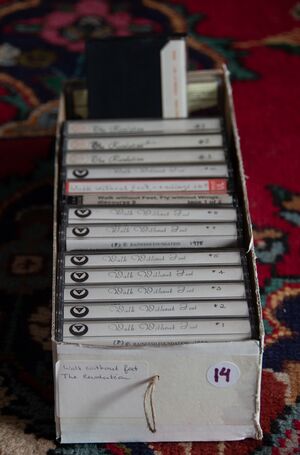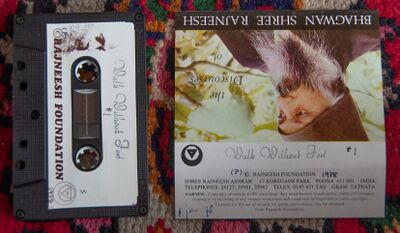Audio Quality
This page is under construction. --Sugit (talk) 19:20, 13 June 2022 (UTC)
- Recording of Osho talking has been done with great care, of course in the early days with primitive means, and as time went on with superb equipment. We think that the quality of Osho's discourses is very important, as it not only conveys the words, but the whole atmosphere of the words and the silences, the birds, the trains and the wind in the leaves. In optima forma listening to the audio should be as if you are sitting right there on the first row.
- But when one listens to audio of the latest "editions" i.e. with the latest quality editing, the sound leaves a lot to be desired. Strange, we feel this is a matter for investigation.
- On this page we present some samples of audio editions, so you can hear for yourself. You don't need audiophile equipment to hear the differences. It's Tao The Three Treasures Vol 3 ~ 01.
- Our concept of "audio editions" is presented at Editions and versions.
- edition 2
- This audio has the voice of Amrito as intro, without music. It was made on the basis of the quality editing in the early nineties.
- This version has been downloaded from oshoworld.com. The quality is pretty bad, but that might have been caused by later changes, like more mp3-compression.
- edition 3
- This audio was aquired at osho.com, with a next level of quality editing, made in the early 2000s. It can be recognized by the muzak around the intro. Indeed, the quality is better than e2, but actually not quite good: too much cleaning of noise gives a 'sterile' sound.
- edition 1

- This audio was digitized from a collection of tape-cassettes produced in Aug 1975. They were aquired from the Osho Meditation Centre at the Cornelis Troostplein, Amsterdam, where they were used as master-tapes until the early nineties.
- The audio-cassette has been digitized by a friend. Procedure:
- Tapes played real-time on a Nakamichi RX-202E,
it's signal output to a analog to digital converter RDL HR-ADC1,
output to a USB-to-digital interface Mutec MC-1.2
interfacing to a PC with software Wavelab Elements to produce WAV files. - These were then checked for completenes, audio levels maximized and saved as FLAC 16bit mono in software Goldwave.
- For display here the FLAC was converted to MP3 as 44.1kHz, 320kbps.
- Tapes played real-time on a Nakamichi RX-202E,

